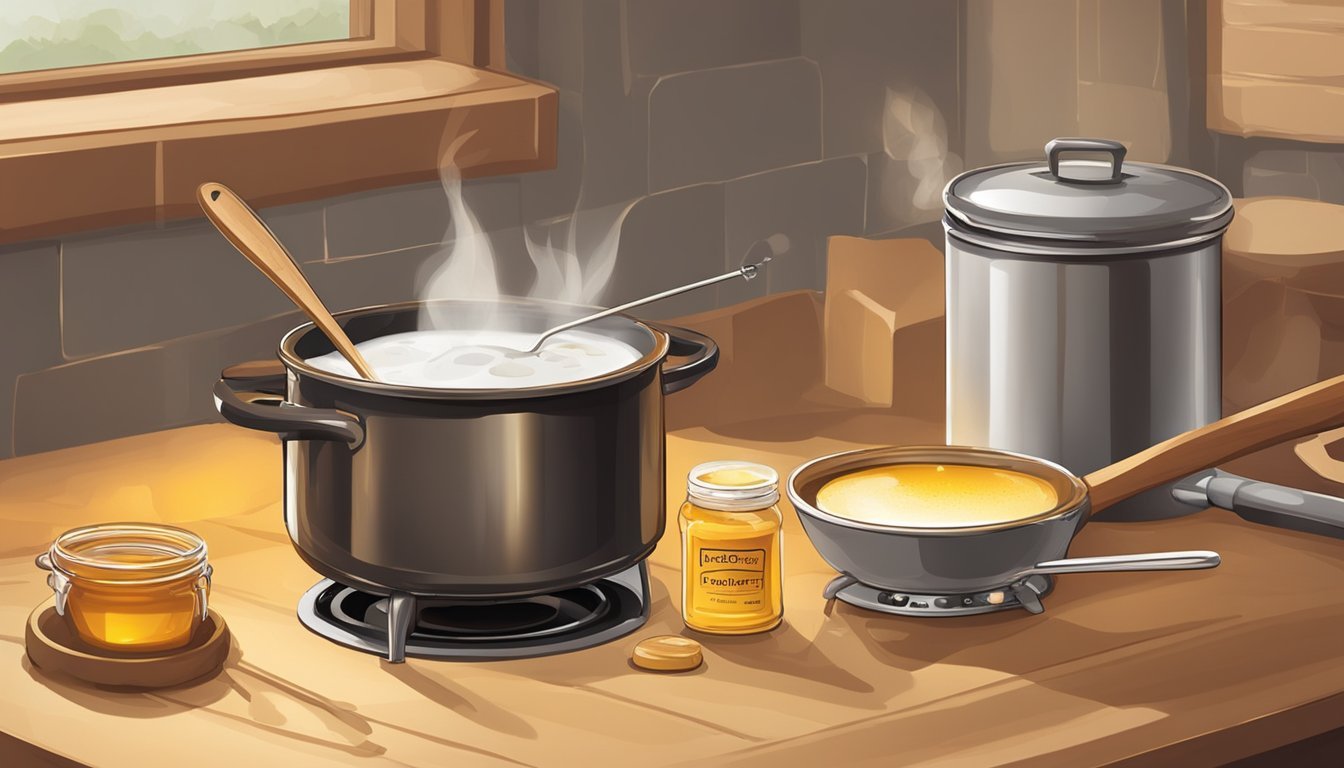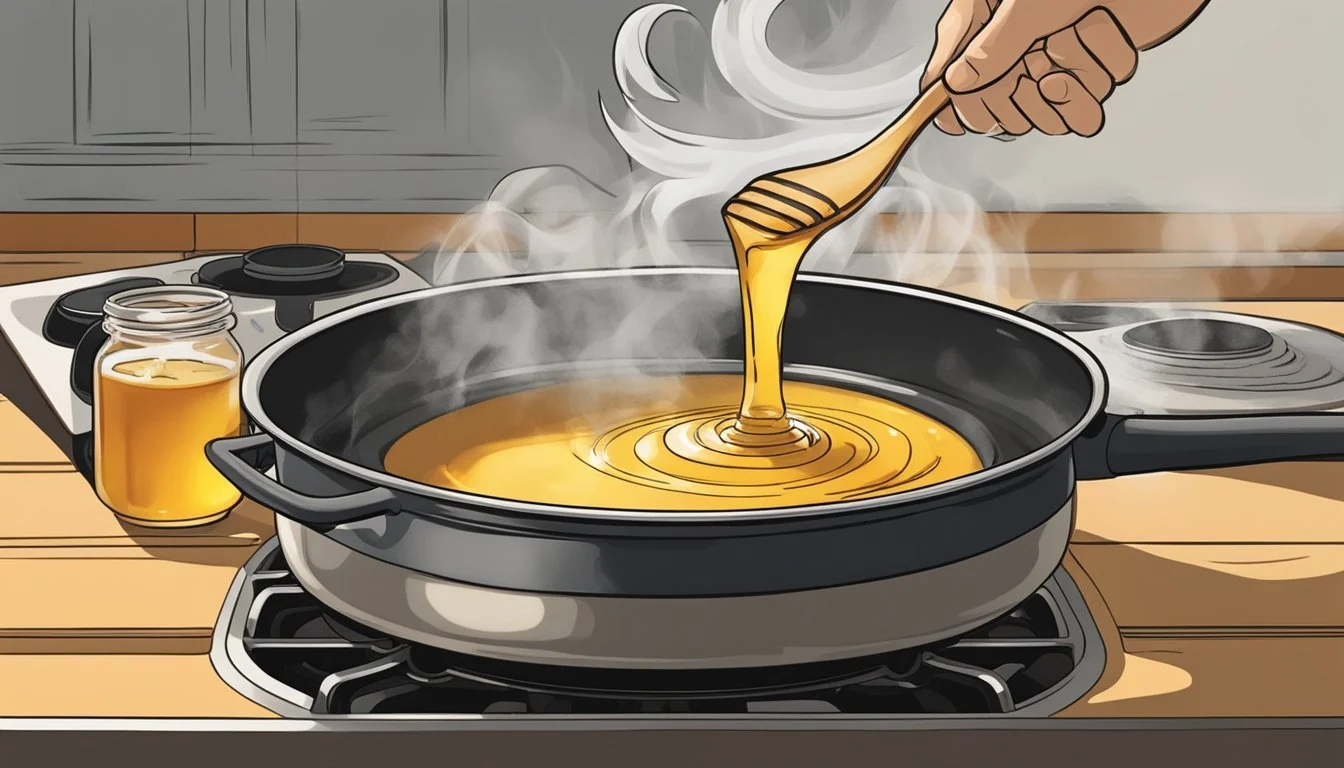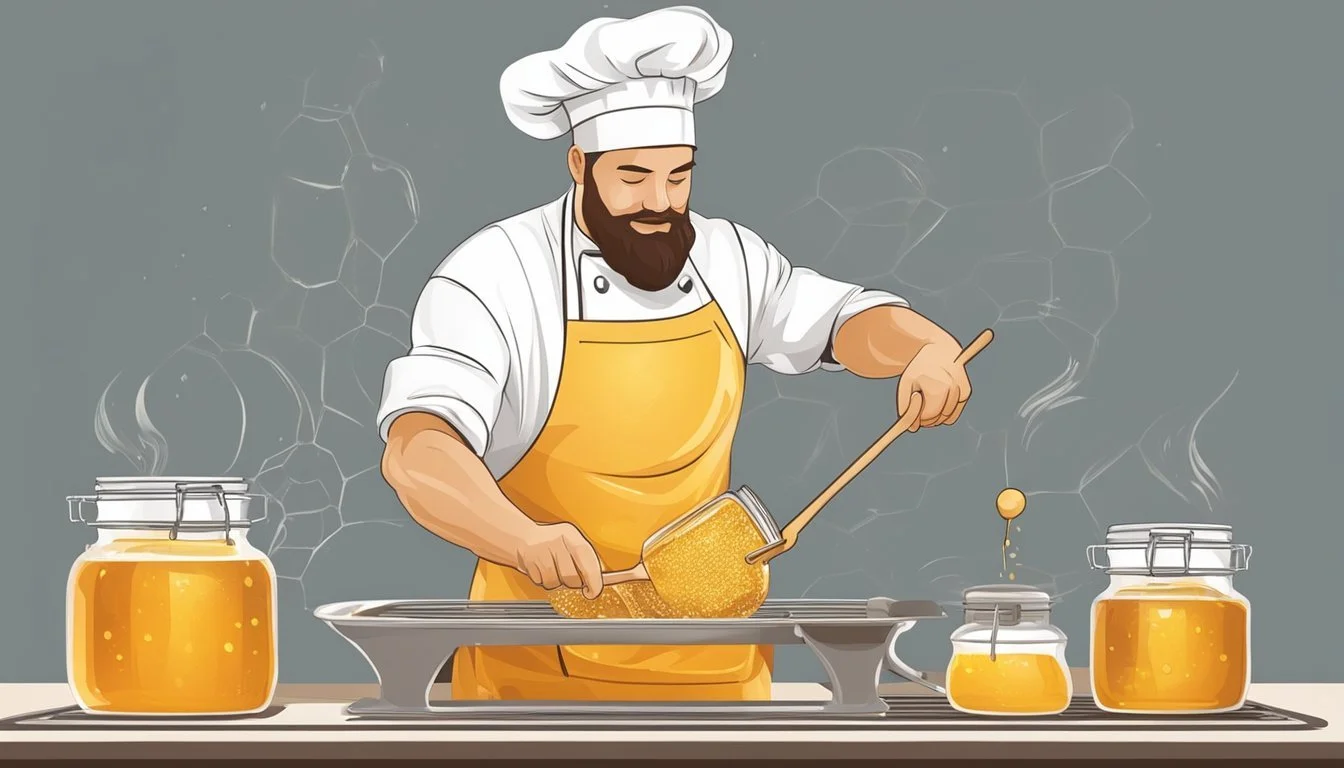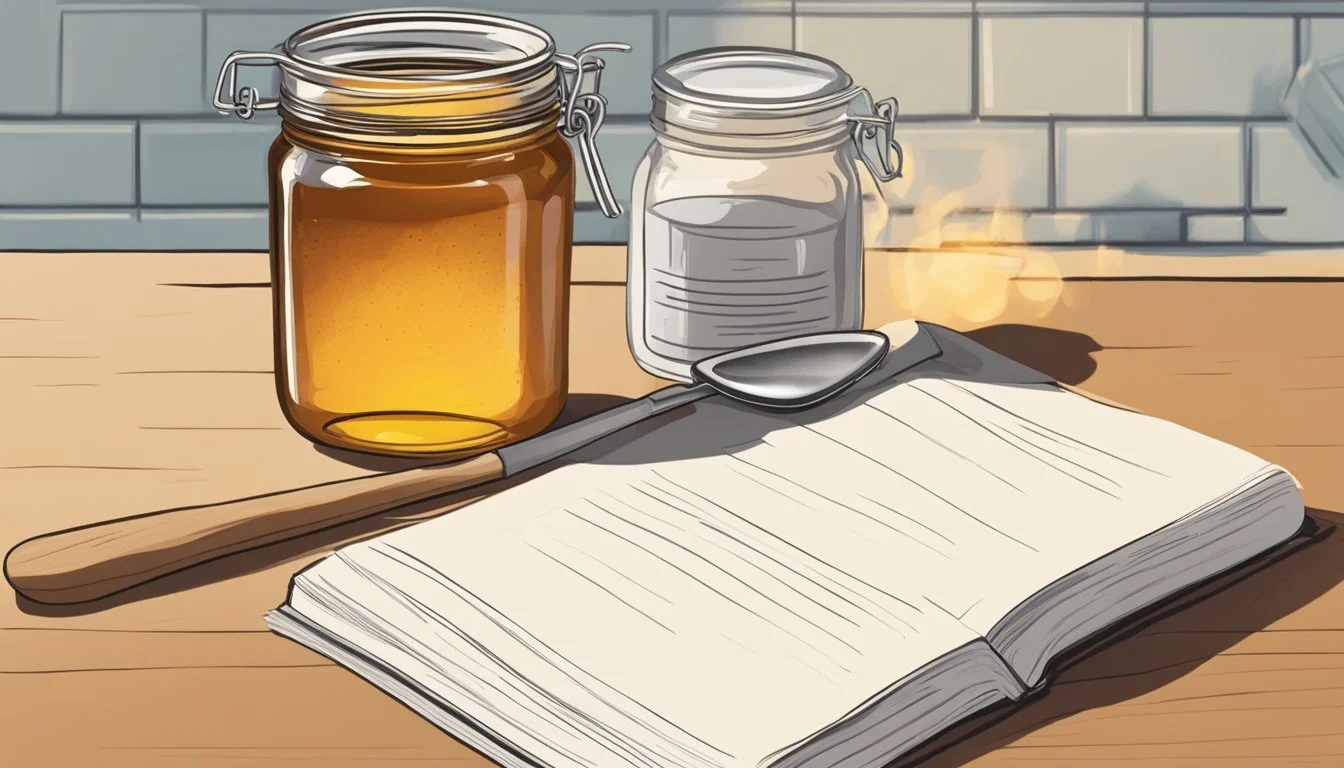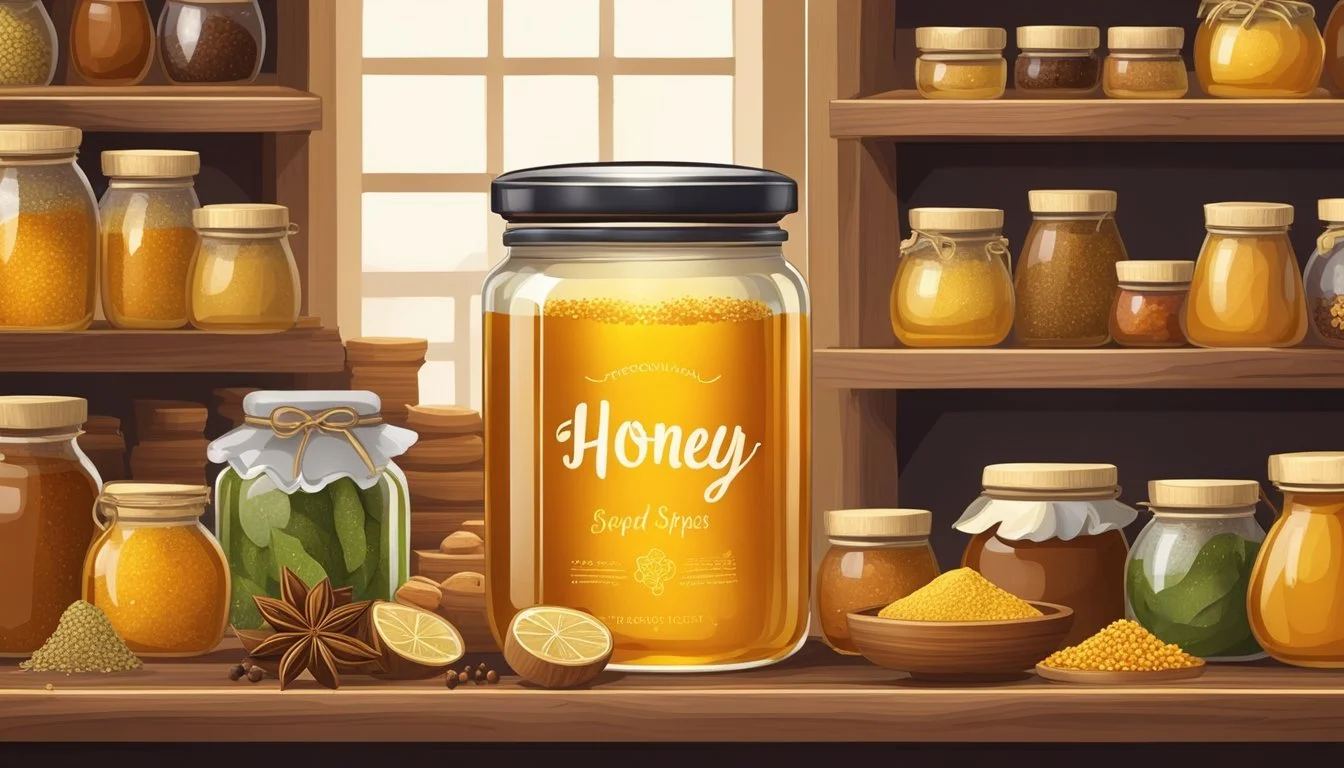Saving Burnt Honey
Tips to Preserve Flavor and Prevent Bitterness
Burnt honey can be a delightful addition to various recipes, offering a touch of caramelized sweetness that enhances desserts and savory dishes alike. However, the line between perfectly caramelized honey and a disastrously bitter flavor is fine. To harness the rich, toasty notes of burnt honey without introducing bitterness requires careful attention to the cooking process and an understanding of when to stop heating the honey. The process involves heating honey beyond its typical melting point, which intensifies the flavor, but also increases the risk of overcooking.
When incorporating burnt honey into recipes, chefs and home cooks must be aware of both the cooking time and the desired color of caramelization. Monitoring the honey's color change is crucial; it should reach a rich brown hue, which indicates the development of complex flavors rather than a burnt aftertaste. Knowledge of the exact temperature at which honey burns and the visual cues signaling that it’s time to remove it from the heat can make the difference between success and failure.
Moreover, understanding the properties of honey and how different types respond to heat can aid in controlling the caramelization process. Not all honey varieties caramelize in the same manner, and factors such as sugar content and natural impurities affect how quickly they reach the point of burning. Preparing burnt honey correctly not only prevents bitterness but also ensures that it can be smoothly integrated into recipes, enhancing them with its distinctive depth and character.
The Science of Honey
Understanding the scientific aspects of honey is integral for chefs and food enthusiasts alike, as it influences the way honey can be used in culinary practices, especially when heat is involved to avoid burnt honey with bitter notes.
Understanding Sugar Composition
Honey is primarily composed of fructose and glucose, two types of sugars with unique properties. The higher fructose content gives honey its characteristic sweet flavor and lower glycemic index compared to table sugar.
Factors Affecting Honey's Flavor
The flavor of honey can be affected by the nectar source, processing, and storage. Varietals like Sardinian bitter honey are known for their distinctly robust flavor compared to more delicate types, directly influencing the final taste of dishes.
Measuring Temperature for Perfect Honey
Precise temperature control is crucial in honey preparation. Using a candy thermometer, chefs ensure honey reaches the ideal temperature for desired consistency and caramelization without progressing to a burnt stage which introduces a bitter note.
Stage Temperature Range Soft Ball 234-240°F Firm Ball 244-248°F Hard Ball 250-266°F Soft Crack 270-290°F Hard Crack 300-310°F
The Role of Honey in Recipes
Honey acts as a sweetener with added moisture. Its unique flavors and antibacterial properties elevate it beyond a mere sweetening agent in recipes, subtly impacting both the taste and texture of a dish.
Honey Varietals and Their Unique Properties
Different types of honey such as clover, manuka, and buckwheat, have distinct tastes, colors, and textures. For example, manuka honey is darker and has a stronger flavor, which works well in recipes that require a bold sweetener.
Chemistry of Honey Caramelization
When honey is heated, it undergoes caramelization, a chemical reaction that breaks down sugars to create complex flavor compounds. Controlled heating enhances sweetness; however, excessive heat can lead to a bitter flavor as it burns.
Preventing Burnt Honey
When making recipes that include honey, avoiding the bitterness of burning is crucial for a desirable outcome. Proper technique and attentive cooking are key to preventing burnt honey.
Optimal Cooking Techniques
Using the correct cooking technique is paramount. One should begin by preheating the oven to the required temperature if the recipe involves baking. For stovetop preparations, honey must be heated gently and simmered rather than boiled vigorously. Constant stirring while heating helps distribute the heat evenly and prevents hotspots that can cause burning.
Using the Right Kitchen Equipment
Equipment can greatly influence the success of a recipe. Select a pot with high sides to accommodate the rise of bubbles during heating without spilling. A candy thermometer is a valuable tool to monitor the exact temperature of the honey. Additionally, using a stand mixer with a whisk attachment can further ensure smooth and even heat distribution when mixing honey with other ingredients.
Monitoring the Cooking Process
Careful monitoring during the cooking process is essential. One must keep an eye on both the appearance and temperature of the honey. It should transition to a rich golden color but not dark brown. If the honey begins to smoke or has a distinct smell of caramel, it has likely reached too high a temperature and may be burning.
Adjustment of Cooking Time and Temperature
The timing and temperature must be adjusted according to how the honey reacts to heat. It is recommended to cook honey at a medium-high heat and then reduce the temperature as it starts to simmer. A candy thermometer should be used to ensure that honey does not exceed 170 degrees Celsius, as higher temperatures increase the risk of burning.
Recipe Adjustments and Substitutions
This section provides detailed guidance on how to adjust the use of burnt honey in recipes and the best ways to substitute other sweeteners effectively, maintaining the desired flavor balance without compromising the texture of your dish.
Balancing Flavors
When honey is overcooked and turns bitter, a cook can counteract this by adding acidic or sweet components. Citrus juice or apple cider vinegar can neutralize bitterness, while increasing spices such as cinnamon or vanilla can enhance the dish’s overall flavor profile.
Alternative Sweeteners and Their Impact
For those looking to replace burnt honey, numerous alternative sweeteners are available, each with unique properties:
Maple Syrup: A natural sweetener with a caramel-like taste, suitable for many recipes that call for honey.
Corn Syrup: Comes in light and dark varieties and offers a consistency similar to honey, with the darker syrup providing a richer flavor.
One should consider the impact of the substitute’s flavor and texture on the recipe.
Adjusting Honey to Sugar Ratios
When substituting sugar for honey, the general ratio is 3/4 cup of sugar for 1 cup of honey. Additionally, for every cup of sugar used, reducing the liquid in the recipe by 1/4 cup and adding 1/4 teaspoon of baking soda helps maintain the proper moisture and leavening.
Weighing Ingredients Accurately
Weighing ingredients ensures precision and consistency in recipes. For example, 1 cup of flour should weigh approximately 120 grams. When it comes to sweeteners:
Honey: 1 cup = 340 grams
Sugar: 1 cup = 200 grams
Accurate measurements are crucial when making substitutions to ascertain a balanced taste and texture.
Enhancing Honey-Infused Dishes
To elevate the taste of honey-infused dishes, one should consider not only the flavor compatibility of the additional ingredients but also the method of incorporation. The right combination can bring balance and depth to the overall dish, while the incorrect one can lead to a clash of flavors or overpower the delicate taste of honey.
Selecting Complementary Ingredients
When creating honey-infused dishes, selecting ingredients that complement the natural profile of honey is crucial. For instance, incorporating fruits such as lemon, lime, or orange can add a vibrant citrus note that enhances the honey's sweetness without dominating the flavor. Nuts like walnuts or almonds introduce a textural contrast and earthy taste that pairs well with the sweetness of honey.
Fruits: Citrus zest, apple slices, figs
Nuts: Almonds, walnuts, pecans
Spices: Cinnamon, vanilla, star anise
Incorporating Honey in Baking
Baking with honey requires an understanding of how it interacts with other common baking ingredients. When replacing sugar with honey in recipes, reduce other liquids by roughly a quarter and add a small amount of baking soda to counteract the natural acidity. Honey's hygroscopic nature helps to keep baked goods moist and extends their shelf life. Ingredients like milk, butter, and eggs can help to balance the moisture content, ensuring the final product isn’t too wet.
Basic Honey Baking Formula:
For every 1 cup of sugar, use 3/4 cup of honey
Decrease the amount of other liquids by 1/4 cup
Add 1/4 teaspoon baking soda for every cup of honey used
Creating Honey-Based Sauces and Glazes
A well-made honey-based sauce or glaze can transform simple dishes into something extraordinary. For savory dishes, one can whisk honey into a mixture of melted butter and cream, adding spices like thyme or rosemary for complexity. These sauces are perfect for drizzling over toast or as a glaze for roasted meats (What wine goes well with roasted meats?). For desserts, a honey and cream blend can be reduced to create a rich sauce ideal for fresh fruit or enhancing the flavor of a cake. Here, the use of spices such as cinnamon or vanilla can impart a warm, inviting aroma.
Example Honey Glaze Recipe:
Honey: 1/2 cup
Butter: 4 tablespoons, melted
Cream: 2 tablespoons
Optional Spices: Cinnamon, cardamom, nutmeg (to taste)
Cook on medium heat until thickened, stirring occasionally.
Repairing Burnt Honey in Recipes
Burnt honey can sometimes be rescued to avoid waste and maintain the balance in recipes. The following subsections provide specific approaches to remedy overcooked honey, neutralize potential bitterness, and suggest creative applications.
Strategies for Salvaging Overcooked Honey
When honey has been overcooked and started to develop a bitter taste, time is of the essence. Diluting with water can be a first step to halt the cooking process. One can carefully add warm water, a tablespoon at a time, stirring consistently to mix thoroughly. It’s important to do this cautiously, as honey can splatter when liquid is added.
Step 1: Remove from heat immediately.
Step 2: Slowly stir in warm water.
Neutralizing Bitterness with Sweet and Acidic Additives
To counteract bitterness and bring back a desirable flavor profile, chefs can utilize sweet and acidic elements. The addition of a sweet ingredient like sugar can balance the burnt notes. Incorporating an acidic component such as lemon juice not only brings brightness but also complexity to the honey's flavor.
Additives:
Sweet: Sugar
Acidic: Lemon juice
Creative Uses for Burnt Honey
A chef’s creativity shines when they transform a mistake into an intentional flavor twist. Burnt honey can provide a smoky depth to various dishes and drinks. For instance, a bitter hint in burnt honey can be a nuanced garnish in a cocktail. It could also serve as a glaze for meats or vegetables, pairing particularly well with ingredients that support caramelized profiles.
Cocktail: Use as a garnish for a sophisticated and unexpected twist.
Glaze: Apply to meats or vegetables for added depth.
By applying these strategies, one can confidently convert the misstep of burning honey into an innovative culinary opportunity.
Presentation and Serving Suggestions
When incorporating burnt honey into various dishes, the presentation and serving suggestions can greatly enhance the dining experience. Specific techniques in plating, food pairing, portioning, and considering temperature and texture are essential for bringing out the best in honey-flavored creations.
Plating Techniques for Honey-enhanced Dishes
Efficient plating of honey-enhanced dishes involves a focus on visual appeal and balancing flavors. For desserts like a honey-drizzled cake or burnt honey ice cream, fluid patterns can be achieved by spooning honey artfully onto the plate. Adding garnishes such as a sprinkle of nuts or fruit can offer a contrast in color and texture. A carefully placed mint leaf or edible flower adds sophistication.
Pairing Foods with Honey Flavors
Burnt honey pairs exceptionally well with both sweet and savory components. For family gatherings or meals with friends, a cheese platter with a small jar of burnt honey makes an inviting combination. Drizzling honey over toast or biscuits brings a warm contrast to these flaky and airy carriers. One can also explore pairing burnt honey with roasted vegetables to add a touch of sweetness.
Serving Sizes and Portion Control
Serving sizes are crucial, as the richness of burnt honey means a small amount goes a long way. For individual servings, a guideline is approximately one tablespoon of burnt honey per serving. This ensures that the honey does not overwhelm the dish but complements the flavors. In a setting with multiple courses, smaller servings leave room for enjoyment of the full menu.
Temperature and Texture Considerations
Burnt honey's texture is best when it is fluid and easy to drizzle. If the honey has been stored in the fridge, gently warming it will restore its pourable consistency. When serving burnt honey with ice cream or cold desserts, the contrast between the cold, fluffy texture of the ice cream and the sticky warmth of the honey can be delightful. Warm honey layered over a just-out-of-the-oven pastry can seep in and create an enticingly moist bite.
Storing and Preserving Honey
Proper storage and preservation are fundamental to maintaining honey's quality and flavor. The following subsections outline optimal practices for both long-term storage and ensuring that honey remains fresh and flavorful.
Long-Term Storage of Honey
For long-term storage, one should keep honey in a cool, dark place away from direct sunlight. The recommended temperature range is between 50°F to 70°F (10°C to 21°C). Excessive heat can degrade honey's natural enzymes and flavor, while too cold temperatures, like in a fridge, can promote crystallization.
Container material: Honey should be stored in glass or BPA-free plastic containers to avoid oxidation that can occur in metal containers.
Lid seal: Ensure containers have a tightly fitting lid to prevent moisture ingress, which could lead to fermentation.
Keeping Honey Fresh and Flavorful
To keep honey fresh and prevent it from taking on a bitter flavor:
Moisture control: Always use clean, dry utensils when handling honey to avoid introducing moisture, which can spoil honey and affect its taste.
Decrystallization method: Should honey crystallize, gently warm the honey by placing the container in warm water until the crystals dissolve. Avoid using a microwave, which can unevenly heat and potentially burn the honey, altering its taste.
Culinary Inspirations Featuring Honey
Honey has found its way into remarkable recipes and gourmet desserts as chefs across the globe continue to harness its complex sweetness, creating masterpieces that are as delightful to the palate as they are to the eye.
Famous Recipes and Their Creators
One of the most recognized chefs when it comes to inventive uses of honey in baking is Christina Tosi. Tosi, the founder of Milk Bar, rose to culinary fame with her creative approach to classic desserts. Her innovation extends to unique cakes and cupcakes that often feature honey as a key ingredient, enhancing traditional flavors with its rich, golden essence.
Russian Honey Cake, also known as Medovik, stands as an enduring classic. This dessert is recognized for its delicate layers of honey-infused sponge and sweetened sour cream frosting, a testament to the versatility of honey in global pastry traditions.
Gourmet Honey Desserts and Pastries
Gourmet desserts often take advantage of honey's depth of flavor and natural sweetness. Honey can shine on its own in honey-infused frostings or as a nuanced accent in complex desserts.
Below is a table showcasing a selection of gourmet pastries where honey plays a starring role:
Dessert Description Burnt Honey Butter Biscuits Biscuits with a twist, featuring a rich, caramel-like burnt honey butter to elevate the humble pastry. Honey Basil Ice Cream A unique frozen treat that combines the aromatic flavor of basil with the sweetness of honey, often garnished with crunchy add-ins like graham crackers. Honey Cakes Utilizing honey's natural moisture, cakes made with honey are often tender and rich, ranging from simple tea cakes to elaborate layered creations.
Whether used in traditional recipes or innovative new creations, honey's role in desserts and pastries is irreplaceable, offering subtle nuances and a comforting sweetness that enhances each bite.


